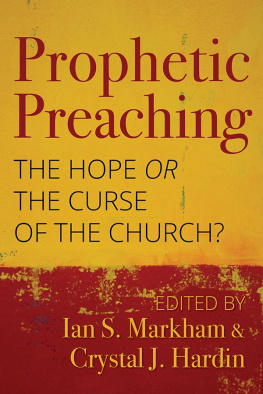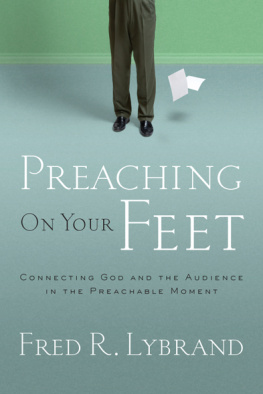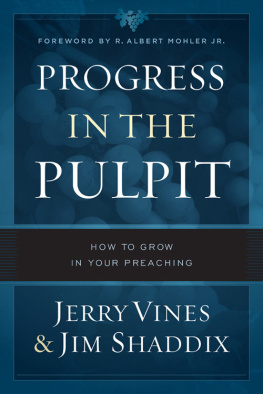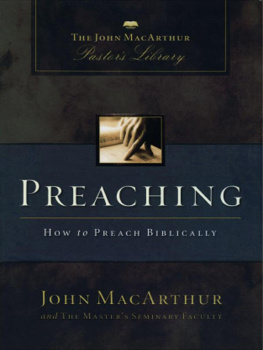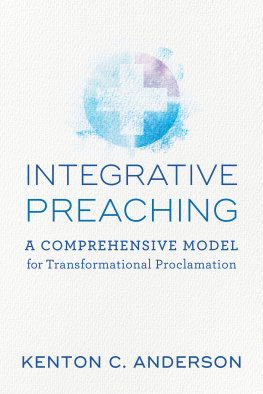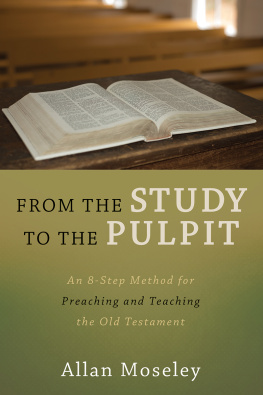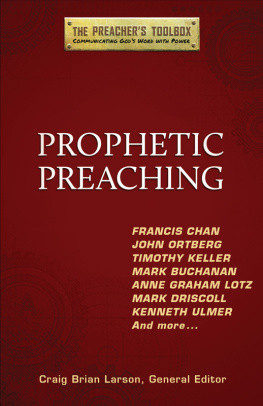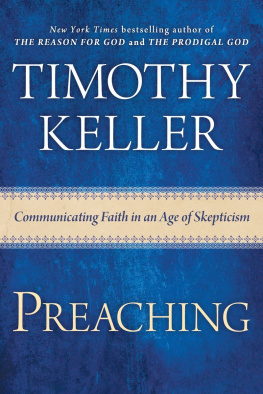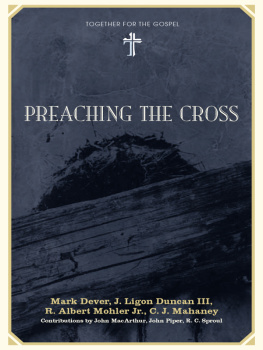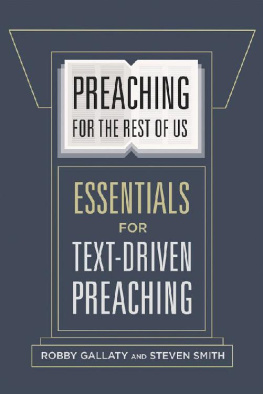This book grew from the authors national empirical study of Catholic young people who said Preaching Matters. How to make preaching better is about connecting. Whether pew-sitter or preacher, read and share this book if you want to open the conversation about how important preaching is to the spiritual life of your community.
Fred A. Baumer, Adjunct Professor of Preaching
St. Johns School of Theology
Collegeville, Minnesota
With her passionate desire to connect pulpits with pews, Bellinger opens the dialogue by interviewing countless parishioners young and old and by giving voice as well to Catholic priests and deacons. Doing so she provides the models and sets the pace for what needs to happen to bridge the gap between parishioner and preacher long before they enter their churches. Her academic research, together with her pastoral understanding, contributes well to her suggested directives inviting others to enter the dialogue that may produce Catholic preaching that is truly conversional.
Msgr. James T. Telthorst, DMin
Archdiocese of St. Louis
Bellinger has travelled the nation trying to crack the loud silence that exists between Catholic preachers and their parishioners, with a special attentiveness to youth. In this book, she reports her discoveries, but perhaps even more important, she shows us how to continue the conversation in our own communities. The discussion questions posed at the end of the book arealoneworth the price of the whole. They promise to provoke meaningful conversations at the local level that could substantially bolster the quality of preaching in the U.S.
Ann M. Garrido, Associate Professor of Homiletics
Aquinas Institute of Theology
Feel like there is a huge cavernous divide between the pulpit and the pew? If you want to close the gap, this is the book. Its historical and contemporary, it includes quantitative and qualitative research, you hear what preachers want and pew sitters desire. Gather a group of parishioners, share the questions in the back, become a listener who gives feedback, and feel the love grow. This is adult faith formation at its finest.
Leland Nagel, Executive Director
National Conference for Catechetical Leadership
Cover design by Stefan Killen Design. Cover art Thinkstock.
Scripture texts in this work are taken from the New Revised Standard Version Bible 1989, Division of Christian Education of the National Council of the Churches of Christ in the United States of America. Used by permission. All rights reserved.
Excerpts from the English translation of The Roman Missal 2010, International Commission on English in the Liturgy Corporation. All rights reserved.
2014 by Order of Saint Benedict, Collegeville, Minnesota. All rights reserved. No part of this book may be reproduced in any form, by print, microfilm, microfiche, mechanical recording, photocopying, translation, or by any other means, known or yet unknown, for any purpose except brief quotations in reviews, without the previous written permission of Liturgical Press, Saint Johns Abbey, PO Box 7500, Collegeville, Minnesota 56321-7500. Printed in the United States of America.
The Library of Congress has cataloged the printed edition as follows:
Library of Congress Cataloging-in-Publication Data
Bellinger, Karla.
Connecting pulpit and pew : breaking open the conversation about Catholic preaching / Karla Bellinger.
pages cm
Includes bibliographical references.
ISBN 978-0-8146-3769-2 ISBN 978-0-8146-3794-4 (ebook)
1. Preaching. 2. Catholic ChurchDoctrines. 3. Catholic ChurchUnited StatesHistory21st century. I. Title.
BV4211.3.B365 2014
251.0088'282dc23
2013050529
For Sophie and Samadhi,
who have blessed my life with joy.
Contents
Acknowledgments
God is good. Sunshine and warmth and the out-of-doors; the sandbox, the ravine, and the baseball fieldmy earliest memories are brightly lit and physically vital. God was there. God is here. My thankfulness rises from that foundation.
My life is full of people. So many have given me a leg up in life: my parents who raised a family of thinkers, my family who have supported me, washed the laundry and ate my oatmeal, and so many friends who have prayed for me and this work and asked for an update of How is it going? Thank you all.
As I began to research listening to listeners, the name of Ronald J. Allen popped up consistently. Ron responded promptly and graciously to each of my early questions and continues to support and further my explorations. Katherine Schmitt shared her prepublished insights into the NCEA study Effective Preaching: What Catholics Want. During my doctoral coursework in preaching at Aquinas Institute, each of my professors furthered my understanding. Ann Garrido was the first to believe, letting me know that it was not crazy to be a mother of five, working full time, and pursuing a doctoral degreeif I was called to it, it would work out. At times I had reservations about that wisdom but, in the end, she was right. In his course Studying Congregations: Methods and Research, Fr. Mark A. Latcovich at St. Marys Seminary persistently asked: How do you measure connection; how can you operationalize that? My thinking sharpened as a result. William Baker of the University of Akron opened my eyes to see how psychological insights into listener receptivity could apply to preaching. Fr. Daniel Harris, CM, had a sense of humor and a meticulous eye that furthered the quality of my doctoral thesis, Are you Talking to Me? A Study of Young Listeners Connection with Catholic Sunday Preaching.
As he prepared to travel to Rome for the synod on evangelization in 2012, Archbishop Joseph Kurtz and I conversed about preaching, the new evangelization, and youth. His encouragement has continued to spur me on.
In the spring of 2013, Bill Miller, Lee Nagel, and Joanie McKeown of the National Conference for Catechetical Leadership (NCCL) opened the doors for the Catechesis in Preaching Research Initiative. Thus the voices of catechetical leaders joined with high school youth and clergy to enrich this study.
I am grateful to Bishop Richard G. Lennon for his episcopal blessing on me and my work. I am thankful for Mickey and Stephanie who have typed and transcribed. I am indebted to the theology teachers who made the paper survey happen as well as to so many who have shared with me their hopes and dreams for preaching. And though Evangelii Gaudium was released after I had submitted this manuscript for publication, I am grateful to Pope Francis for his fervor for the renewal of preaching. May this book further that vision through the words that follow.
PART ONE
The Search for Connection
When you click on your internet start page, a little circle goes round and round and round. The word Connecting..., pops up next to the revolving circle. Suddenly, you are connected to every corner of the world. Do you want to buy a car? Do you want to chat with your classmates? Do you want to check if it will be sunny today? You can find that out in an instant. Remotely, your doctor can diagnose your diseases by looking at your data on her desktop. A student can graduate from an online university without ever dumping her backpack onto a chair in a classroom. You can read this as an e-book without ever turning a page. Connect... connect... connect.... You and I live in a connected world. It is no longer news. It is reality. Connection is our life.
By contrast, a Christian preacher physically walks to a pulpit or a stage. In a live performance, that man or woman speaks on behalf of God. The words cannot be edited or tidied up or rewound before they are sent out. There is no wireless router. There is no cell tower. There is no coaxial cable. How, then, is a preacher supposed to connect? Does the homiletical human bond matter anymore? Does preaching make a difference?


